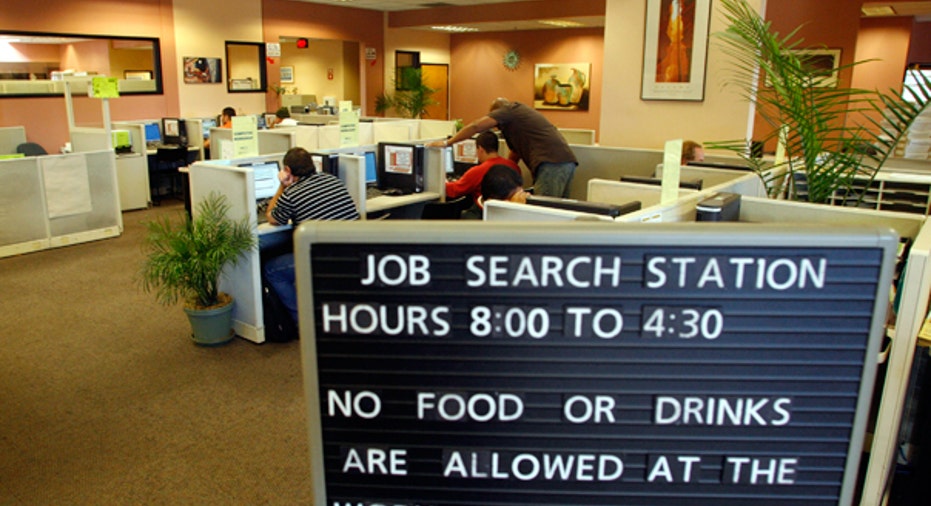Jobs Report: What to Expect

U.S. employers likely stepped up hiring a touch in December as retailers and other businesses took on more staff for the holidays, but the gain will probably not be enough to make inroads in the country's still high unemployment rate.
Payrolls outside the farming sector are expected to have grown by 150,000 last month, a modest increase from November's 146,000 job gain, according to a Reuters poll of analysts.
The employment reading, due to be released by the Labor Department on Friday at 8:30 a.m. EST (1330 GMT), is likely to point to modest economic growth despite uncertainty in late 2012 over a fiscal crisis that continues to threaten the economy.
The forecast increase in payrolls would be the most in five months, but would probably not make the U.S. Federal Reserve rethink its easy-money policies that have been propping up the economic recovery.
The jobless rate is seen holding steady at 7.7% in December, down nearly a percentage point from a year earlier but still well above the average rate over the last 60 years of about 6%.
"It's not a booming economy, but it is growing," said Jim O'Sullivan, an economist at High Frequency Economics in Valhalla, New York.
December's likely pace of hiring suggests the jobless rate will come down at a painfully slow rate in 2013, dropping to around 7.4% in the last few months of the year, he said.
Most economists expect the U.S. economy will only grow about 2% this year, held back by tax hikes as well as weak spending by households and businesses that are still trying to reduce their debt burdens.
A mammoth storm that hit the East Coast in late October will once again make it difficult to use the employment report as a gauge of the underlying strength of the economy.
The storm led to a spike in new jobless claims, but the government said in its employment report last month that the storm had no substantial impact on hiring in November.
Some economists found that conclusion hard to believe because a separate survey of households, which is used to calculate the jobless rate, showed a jump in the number of workers not reporting to work because of bad weather in November.
That suggests December's payroll figures could get a one-off boost, said Paul Dales, an economist at Capital Economics in London. He expects 175,000 new jobs were created last month.
At the same time, consumer spending has shown signs of accelerating in recent months, and retailers added 140,000 jobs in the three months through November.
"There is some evidence that underlying jobs growth has improved," Dales said.
Also pointing to strength in hiring, payrolls processor ADP said on Thursday the private sector added 215,000 jobs in December. ADP has a mixed track record for predicting the government's more comprehensive jobs report, but the data helped prompt Goldman Sachs to raise its forecast for jobs growth in December to 200,000.
Average hourly earnings are expected to rise 0.2% in December, while the length of the average work week is seen holding steady at 34.4 hours, the Reuters poll showed.
AUSTERITY'S BITE
Despite the signs of some momentum in hiring, a wave of government spending cuts due to begin around March loom over the economy.
Many economic forecasts assume the cuts - which would hit the military, education and other areas - will ultimately be pushed into next year as part of a deal sought by lawmakers to reduce gradually the government's debt burden.
Initially, the cuts were planned to have begun this month as part of a $600 billion austerity package that also included tax hikes. Hiring in December may have been slowed by uncertainty over the timing of the austerity, economists say.
Congress this week passed legislation to avoid most of the tax hikes and postpone the spending cuts.
Even with the last-minute deal to avoid much of the "fiscal cliff," most workers will see their take-home pay reduced this month as a two-year cut in payroll taxes expires.
That leaves the Fed's efforts to lower borrowing costs as the main program for stimulating the economy.
The Fed has kept interest rates near zero since 2008, and in September promised open-ended bond purchases to support lending further. On Thursday, however, minutes from the Fed's December policy review pointed to rising concerns over how the asset purchases will affect financial markets.
Analysts think some of the expected strength in job creation in December was due to the Fed's policies.
"Despite the end-of-year angst over the 'fiscal cliff,' financial conditions remained supportive of job growth in December," economists at Nomura said in a note to clients.